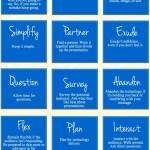Blogging is a powerful tool for fostering creativity, improving writing skills, and encouraging self-expression among students. For TESOL teachers, integrating blogging into your curriculum can provide English language learners with an engaging platform to practice and enhance their language skills in a meaningful context. Below, explore 20+ ideas and resources to inspire your students through blogging and help them achieve English mastery.
Why Blogging is Valuable for TESOL Students
- Promotes Authentic Writing: Blogging allows students to write for a real audience, making their efforts feel more purposeful.
- Improves Digital Literacy: By engaging with blogging platforms, students develop essential 21st-century skills.
- Encourages Reflection and Growth: Writing regularly helps students track their progress and reflect on their learning journey.
- Fosters Communication Skills: Commenting and interacting on blogs enhances language use in conversational contexts.
20+ Blogging Ideas for TESOL Students
- Cultural Exploration: Write posts about their culture or explore customs and traditions from English-speaking countries.
- Travel Diaries: Share imagined or real trips, including itineraries, highlights, and reflections.
- Book Reviews: Summarize and critique books or short stories read in class.
- Language Learning Tips: Encourage students to share their experiences and strategies for learning English.
- Creative Writing: Publish poems, short stories, or scripts for plays.
- Interviews: Conduct and write interviews with classmates, teachers, or community members.
- Weekly Reflections: Post about what they learned each week and their goals for the future.
- Photo Blogs: Pair descriptive writing with personal or class-taken photographs.
- Vocabulary Challenges: Create word-of-the-day posts with definitions, examples, and visuals.
- Global Issues: Write about environmental concerns, social justice, or global news.
- Hobbies and Passions: Blog about favorite activities, sports, or creative pursuits.
- Food Adventures: Share recipes, cooking experiences, or descriptions of favorite meals.
- Music and Art: Discuss songs, bands, or artists that inspire them.
- Dream Jobs: Write about future aspirations and steps to achieve them.
- How-To Guides: Explain how to do something they know well, like a hobby or life hack.
- Day in the Life: Describe a typical day or a special event.
- Movie or TV Reviews: Analyze films or series they’ve watched in English.
- Current Events: Write summaries or opinions on recent news stories.
- Celebrations: Post about national or personal holidays and how they’re celebrated.
- Pen Pal Projects: Collaborate with students from other countries and share their cultural exchanges.
Resources to Support Blogging in TESOL Classrooms
- Free Blogging Platforms:
- Writing Tools:
- Grammarly for grammar checks.
- Hemingway Editor to simplify writing.
- Canva for creating visuals to accompany posts.
- Collaborative Tools:
- Padlet for brainstorming blog ideas.
- Google Docs for drafting and editing posts collaboratively.
- Blog Post Inspiration:
- Pinterest for creative writing prompts.
- National Geographic Education for topic ideas on global issues.
- Professional Development:
- TESOL webinars and online courses about integrating blogging and digital tools into the classroom.
Tips for Successful Blogging in TESOL Classrooms
- Start Small: Begin with short, simple posts and gradually increase complexity as students grow comfortable.
- Provide Guidelines: Offer clear expectations and rubrics for blog posts.
- Encourage Interaction: Have students comment on each other’s blogs to foster peer-to-peer learning.
- Celebrate Efforts: Share exemplary posts with the class or wider community to boost confidence.
- Integrate Multimedia: Encourage students to use images, videos, and links to enhance their blogs.
Inspire Through Blogging
Blogging is more than just writing; it’s a gateway to creativity, communication, and critical thinking. By incorporating blogging into your TESOL classroom, you provide students with a modern, interactive way to improve their English skills while expressing their unique voices.
Are you ready to inspire your students? Try these ideas and resources to turn your classroom into a vibrant hub of learning and creativity. Happy blogging!



